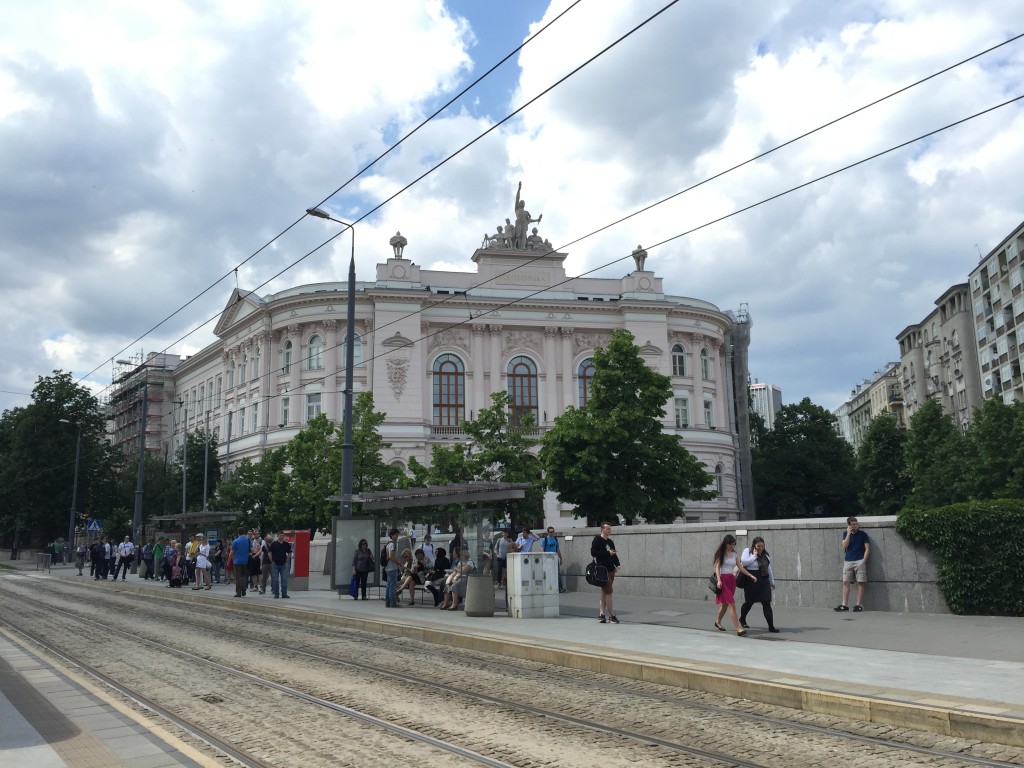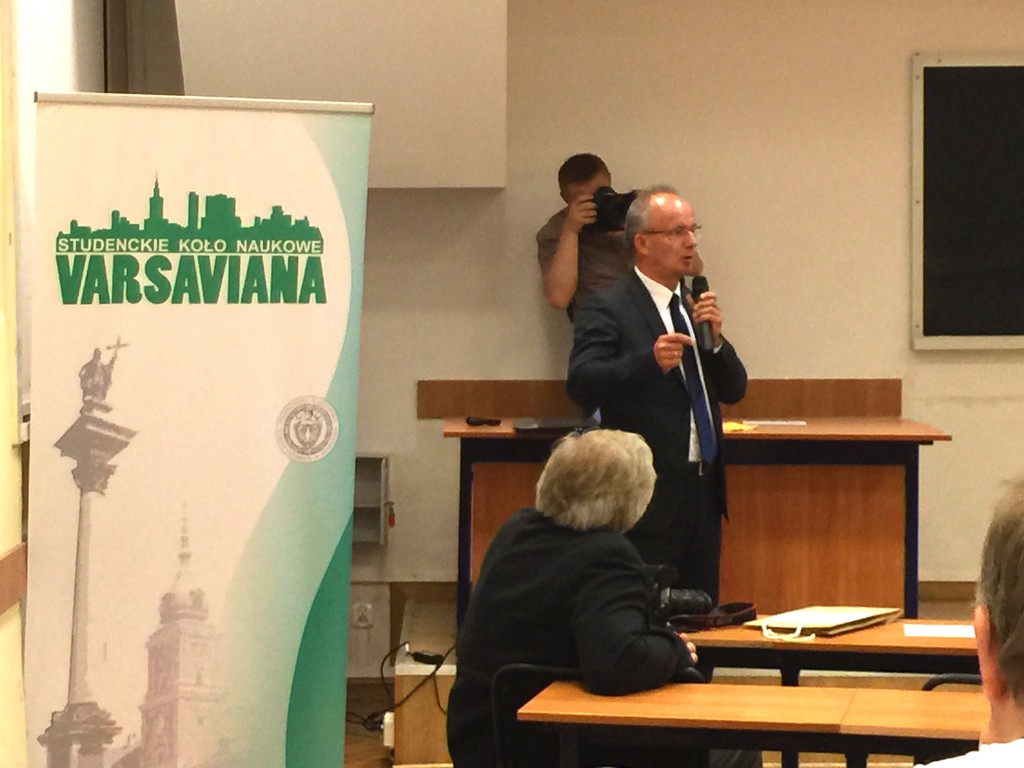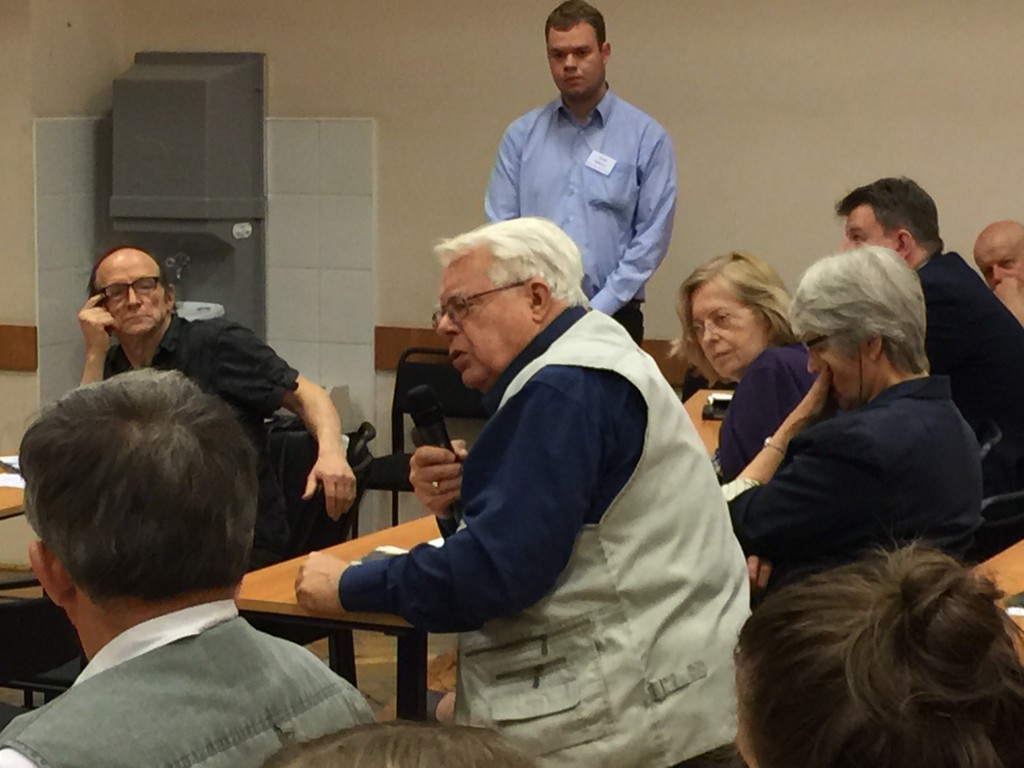In 2012 I wrote a piece entitled “The Medallion in the Skull” about the efforts of the Institute of National Remembrance (IPN) in Poland to exhume and identify the remains of Polish patriots murdered by the communists in Stalinist era (1944-1953) of Soviet domination over Poland.
The Warsaw University of Technology
Last week I attended an academic conference at the Politechnika Warszawska (Warsaw University of Technology) which discussed the progress of the IPN archeologists in the “Ł” quarter or “Meadow”, of the Powązki Cemetery in Warsaw where as many as several hundred Poles were buried in unmarked graves.
The speakers discussed different phases of the exhumation work, including the historical, archeological, anthropological and medicinal-judicial.
Before any exhumations were begun, extensive research was undertaken in various archives to identify as much information about Poles who were killed, including the dates of their executions and likely location of their burial.
The archeological component first involved the use of ground-penetrating radar to identify the most probably locations of buried remains and then commencing with digging.
Dr. Krzysztof Szwagrzyk, historian and head of the Institute of National Remembrance exhumation work on the “Meadow” and elsewhere in Poland
The anthropological component of the work was intended to precisely identify separate sets of remains and catalog them through extensive use of photography, labeling and measurements. This phase was meant to identify the gender, age, height and unique characteristics of each set of remains. Age could be approximately determined based on the calcification of the bones.
The remains of Danuta Siedzikówna “Inka” were identified relatively quickly when they were recovered near Gdańsk because her skeletal structure had not fully formed. She was only 17 years old when she was executed.
The medicinal-judicial component of the work involved the painstaking process of trying to identify individual remains and discover the identity of the person they belonged to. This would be done by searching to physical characteristics of the individuals from their medical records, including prior injuries and surgeries (such as amputated fingers), and dental records, but also the use of DNA testing, taking samples from living relatives and comparing them to the genetic material recovered from the remains. Bolesław Kontrym (about whom I wrote last year) was identified in this way.
One of the speakers, Dr. Łukasz Szleszkowski, commented that in some places where exhumations were carried out, the process of attempting identification was much more difficult. In the area of Opole, Poland, a mass grave was unearthed that contained about two and a half thousand bones, mixed together. The archeologists estimated that there were about twenty-five bodies there, based on the number of femur bones that they recovered.
Although a lot of work has been done to recover nearly 100 sets of remains from the “Meadow”, perhaps just as many remains lie buried beneath the official graves erected since the murders and burials were carried out. Later, this area was covered by an additional layer of dirt where regular graves were placed, some of them being the graves of the communist functionaries who sentenced the murdered Poles. Polish law prevents these graves from being temporarily moved or relocated to continue exhumation work beneath them without the agreement of the families. This sad fact (and apparent difficulties intentionally put in the way of further exhumations) has stopped any further work on the project.
During the Q&A session, I asked Dr. Krzysztof Szwagrzyk, the head IPN archeologist in charge of the exhumations, whether the difficulties he has encountered were purely legal hurdles, or if there were certain individuals in power who didn’t want the truth to come out. He said that this one one of his least favorite questions to answer, but did state that “there are still people working in Poland who don’t want the results of this work revealed.”
Witold Mieszkowski, son of Stanisław Mieszkowski, a high-ranking Polish naval commander murdered in 1952 and buried in the “Meadow”, whose remains were identified in 2014 as a result of DNA testing, also answered this question.
He said that a film should be made one day about the difficulties thrown in the way of Dr. Szwagrzyk and his team during their work. He related the story of current President Bronisław Komorowski being at the “Meadow” in 2012 and expressing surprise that remains had been discovered there. Strangely, Komorowski, then as vice minister of defense, was at the “Meadow” in the early 1990s as well with Prime Minister Tadeusz Mazowiecki to lay flowers there. One of the photos presented during the conference showed Mazowiecki, Mieszkowski and Komorowski from that day. Komorowski knew of the likelihood of remains being buried in the “Meadow” as early as 1990 and this was an undeniable fact by 2012, yet it wasn’t until late 2014 that legislation was introduced to make the relocation of graves easier.
According to Mieszkowski if there was a spirit of good will towards recovering these remains, this legislation would have been brought forth long ago. He emotionally stated that “this is the way this country is!”
In my opinion, Dr. Krzysztof Szwagrzyk and the members of his IPN team are among the most noble and patriotic Poles alive today. Dr. Szwagrzyk has promised that he will not rest until the last remains are recovered from the “Meadow”. Sadly, it seems that powerful forces are still at work in Poland that are tied with the countries communist, tyrannical past and are intent on impeding the work being done in Warsaw and elsewhere. As many as 50,000 Poles were murdered by the communist authorities in the dark days of Stalinism and there are still potentially hundreds of burial sites to be unearthed.
As a result of the exhumations which began in 2012, the Polish Genetic Database of Totalitarianisms Victims was established to aid in the identification of the thousands of murdered Poles and save them from the anonymity that has served as a type of second murder for more than half a century.



One thought on “Exhuming the Victims of Communism in Poland”